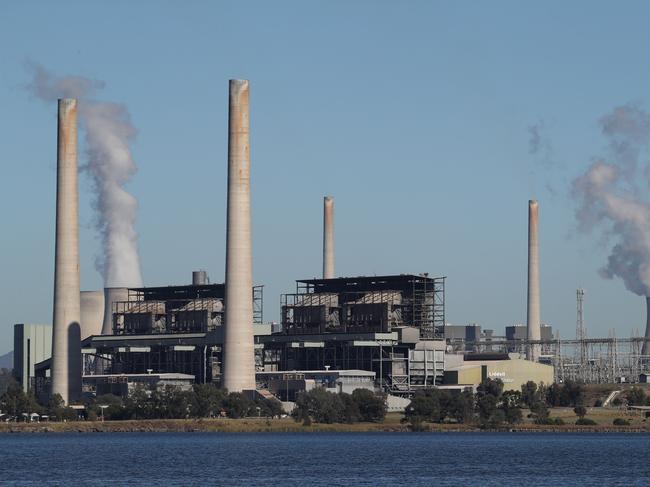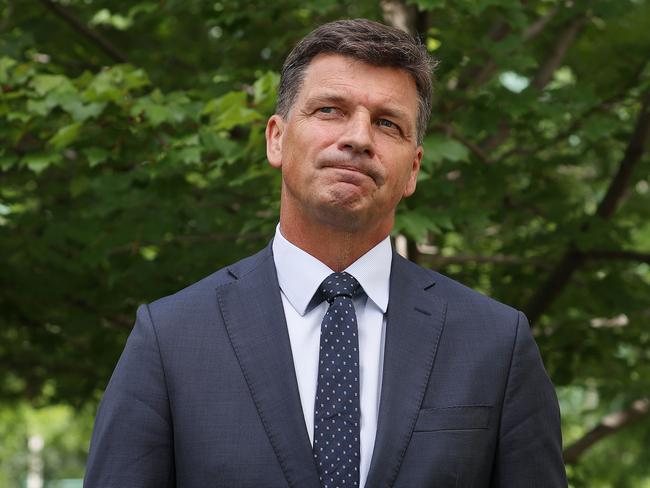Federal budget 2022: Hydro and gas key to low emissions technology
Climate groups have slammed the government for backing fossil fuels in the budget, as a new study revealed how quickly Aussies are turning to solar power.
Federal Budget
Don't miss out on the headlines from Federal Budget. Followed categories will be added to My News.
Climate groups have slammed the government for backing fossil fuels and poorly-performing Carbon Capture and Storage (CCS) technologies rather than renewable energy in Tuesday night’s budget.
The criticisms come as a new global study showed Australia has had the second-biggest shift towards solar and wind power of any country over the past three years.
Economist Nicki Hutley from the Climate Council said the government was committing just 0.3% of total expenditure over three years to climate change initiatives, and that rate would fall to just 0.2% after 2024.
“Rather than investing in a green economic future, the Federal Government has used (the) budget to toss mere pennies at genuine emissions reduction initiatives, such as the regional renewable microgrids,” Ms Hutley said, referencing the $148m allocated for solar and wind power in rural areas.

“At the same time, significant funds are being spent on so-called ‘low emissions hydrogen’ and the costly and unproven carbon capture and storage. And a further $50 million dollars is being directed to accelerate polluting gas projects,” Ms Hutley said.
Clean Energy Council Chief Executive Kane Thornton said the government had once again “prioritised the fossil fuel industry”.
“(The budget) fails to look to the medium-to-long term future through an all-important lens of reducing the emissions that are having a devastating impact on the climate, the environment and on the lives of everyday Australians,” he said.
The Australian Conservation Foundation said the cuts to climate change spending “defied comprehension”.
“While we are living through a climate and extinction crisis, this government is pumping billions of dollars into the industries exacerbating the problem,” ACF spokesperson Matt Rose said.


Australian Petroleum Production & Exploration Association (APPEA) Chief Executive Andrew McConville welcomed the budget, saying it reaffirmed the long-term role oil and gas would play in Australia’s lower emissions future.
The $300 million set aside to support low emissions LNG (liquid natural gas), hydrogen production and CCS infrastructure “can help us continue to contribute to that pathway,” he said.
But a new study of global energy trends from the UK climate think tank Ember showed Australia is coming second only to The Netherlands in the speed of its adoption of new solar and wind power.
Wind and solar now contribute 22 per cent of Australia’s energy mix, up from 13 per cent in 2019, the report’s authors found.
But the adoption of solar power in Australia was coming despite federal government policies, the think tank said.
“Australia’s renewable electricity has been driven from the bottom up,” said Ember’s Global Programme Lead David Jones.
“This is very different from many countries where national governments lead the charge. It’s very refreshing to see so many people embracing homegrown solar, even as the national government continues to push for more oil and gas.”

Hydrogen and gas projects commanded the lion’s share of the government’s budget spending in the energy sector.
A $247m package will help spur private sector investment in low-emissions energy technology, and continue the government’s Guarantee of Origin scheme for hydrogen. Under this scheme, energy producers are obliged to inform consumers whether their hydrogen is green (produced by solar or wind power), blue (produced by burning natural gas) or
brown (produced by burning coal).
A further $300m has been earmarked to turn Darwin into an export hub for the production of low-emitting LNG (liquid natural gas) and clean hydrogen – but that funding is linked to controversial carbon capture and storage (CCS) technologies, which critics say have produced disappointing results to date.
The government will also spend $50m over the next two years to accelerate gas infrastructure projects, once again with a focus on CCS tech.
Another $200m has been set aside for the development of hydrogen-powered manufacturing in the Pilbara, and an equal amount will be spent to increase Australia’s iron ore processing capacity, to support the manufacture of green steel in Japan and Korea.
Energy Minister Angus Taylor stressed the government’s energy priorities would continue to exert downward pressure on household energy bills.
“In the last two years alone, the ACCC has found power costs have dropped 8 per cent for households – that’s a $128-a-year drop,” Mr Taylor said.
For small businesses, power costs had dropped 10 per cent over the same period and for big business the savings had been 12 per cent.

Mr Taylor said the government’s energy priorities would ensure Australia would “meet and beat” its 2030 greenhouse gas emissions reduction target – the 26-28 per cent cut mandated by the Paris Agreement.
But neither he nor Treasurer Josh Frydenberg in his budget speech referenced the more ambitious 30-35 per cent emissions cut forecast which Prime Minister Scott Morrison presented at the COP26 conference in Glasgow last November.
While references to low-emissions energy technologies abound in the budget papers, there are comparatively few mentions of renewable energy sources, other than $148m set aside for the development of energy microgrids using solar and wind in rural areas.
The budget papers had no new initiatives regarding electric vehicles. Coal and nuclear power also did not rate a mention.





